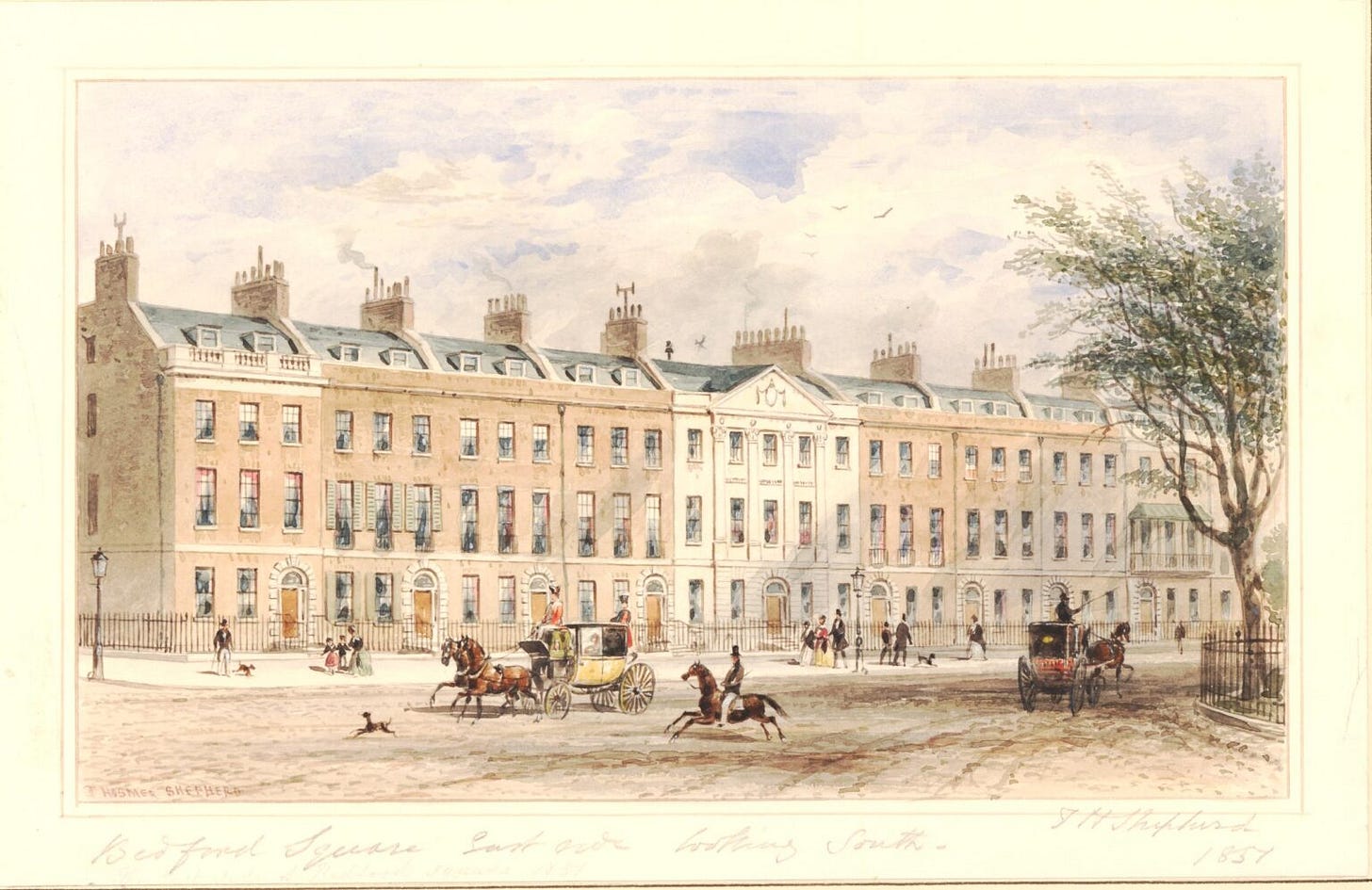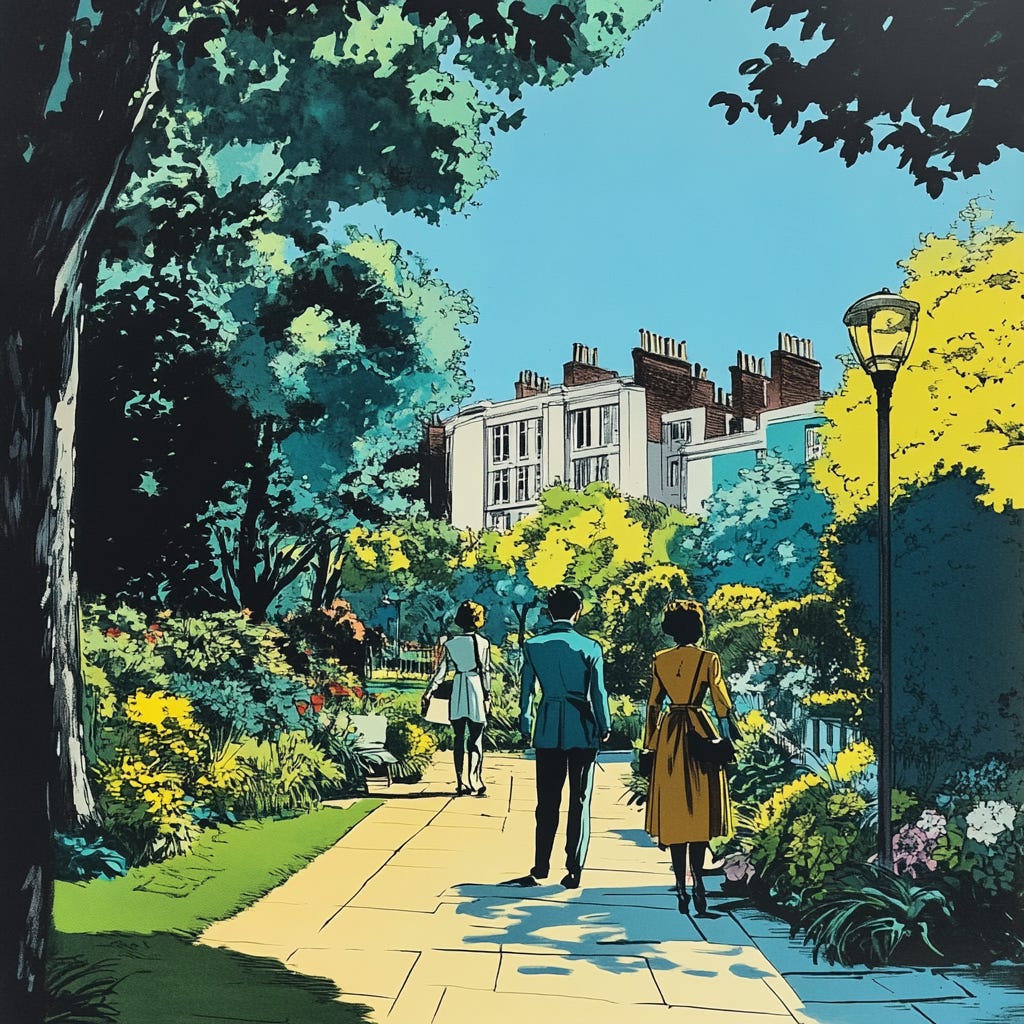Behind the gate
Inside London's private garden squares
Written by Sienna James for the Greater London Project.
Behind the towering foliage and creaking iron gates of private garden squares lie some of London’s finest views. To many Londoners the gardens are just a marker on a journey, travelled by rather than being destinations in their own right. But scattered across the city, the hundreds of private garden squares tell a story of innovation and creativity which deserves to be shared.
Usually only accessible to select residents' associations, most gardens will be open to the public on 7 & 8 June, during the London Open Gardens weekend. More than a glimpse over the railings, the weekend is a rare opportunity for anyone seeking new perspectives on everyday sights. Within the garden squares, visitors can get a new perspective on otherwise familiar buildings.
Take Bedford Square – the only complete Georgian square remaining in Bloomsbury. Visitors to the square can fully appreciate Thomas Leverton’s innovative square design, where he transplanted Georgian country house facades onto each of the square’s four ‘wings’. Each side emulates the appearance of a stately home, with a central structure consisting of a pediment and pilasters marked out in white stucco, standing in direct contrast to the bricked houses on either side. The simple design is repeated around the square, creating a sense of order and harmony.
Over time, residents and architects of Bedford Square have inserted individuality into an otherwise coherent design through the addition of railings, rusticated arches, coloured doorways and terraced balconies. The square’s original layout has developed since its original arrangement, with the shrubbery and serpentine paths having been modified to privilege open space and a central hexagonal pavilion feature.

Architects and landscapers often designed the gardens with the aim of creating pockets of exploration and delight amongst some of the city’s densest streets. Thomas Cubbit laid out Warwick Square, situated just south of Victoria, in the mid-19th century. The square is an example of how the picturesque movement – with a focus on intentionally curated views and visual variety – gradually disseminated from country houses and altered the city’s urban fabric in this period.
Warwick Square garden features an impressive variety of features and plants, with a rose garden, formal bedding and lawn area, and a mix of shrubs, herbaceous plants and seasonal ephemerals. The garden also holds plane, lime, sycamore and alianthus trees. Describing the square in 2022, the Open Gardens judges awarded Warwick Square the Best Small Park Award and called it “a gardener’s delight – a structured hotchpotch from the everyday to the unusual and exotic.”

Earl’s Court Square demonstrates how London’s history has shaped its green spaces. In World War II a bomb hit the square and caused considerable damage to both the buildings and the garden. The space was not prioritised in the subsequent repair efforts across the city, and remained unusable as a green space throughout the 1950s and 1960s.
However, using powers in the Kensington Improvement Act 1851, which authorised residents to manage their garden maintenance, the Earls’ Court Residents’ Association took over the garden square in the 1970s. The committee have since managed the space, and visitors to the square over the open garden weekend will be able to experience its improvements, including new steel railings, an irrigation system, flood lighting, and circular seating around the central plane tree.
London’s private garden squares trace the city’s architectural evolution, from the early development of Bloomsbury’s squares to the communal efforts taken to restore gardens in the 20th century. They tell a story of innovation, often transplanting design and landscaping trends from elsewhere in the country into the city’s urban fabric, fundamentally reshaping the streets and districts residents call home. So, for those seeking a fresh perspective on everyday sights, take a chance to tour the garden squares and celebrate London’s creative and communal approach to architecture and landscape design.
More details of London Open Gardens 2025 can be found here, with a full list of participating gardens here.
Community notes:
If you enjoyed this post about garden squares, you might like Samuel Hughes’ article about the history of unified ownership and larger developments.
Greater Londoners will also enjoy this good blog on the next London Plan.
The GLA is appointing four independent members of the Old Oak and Park Royal Development Corporation, find out more and apply. Similarly, Brent Council is appointing two independent members to its housing development companies, more info here.
Thank you to everyone who turned out for our last drinks at Mother Kelly’s. If you aren’t subscribed to our events calendar you can join it here - more coming soon!
Hope you have a great weekend!
Joe Hill, on behalf of the Greater London Project.




Thank you for this. London's garden squares are indeed pockets of exploration and delight.